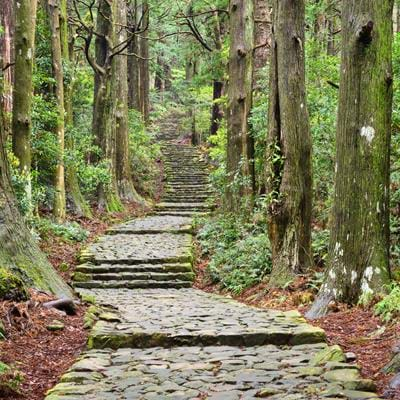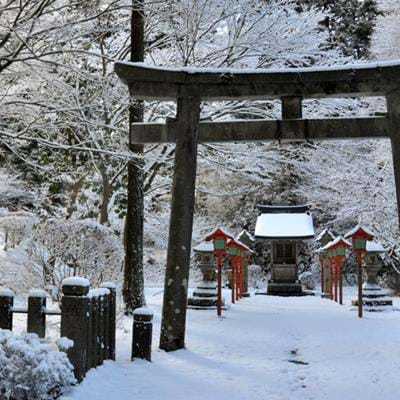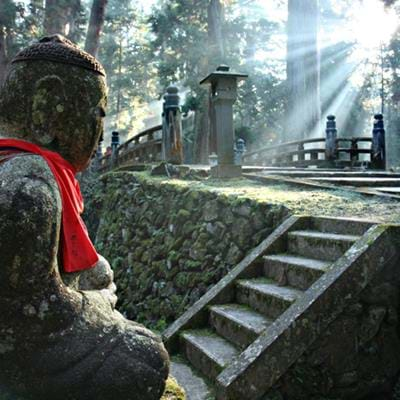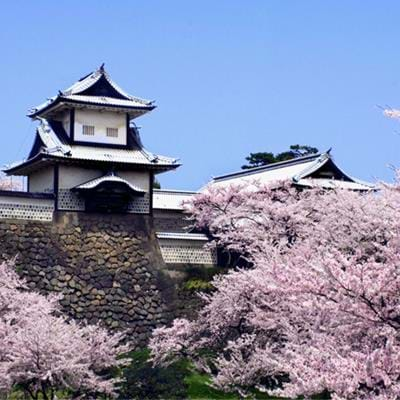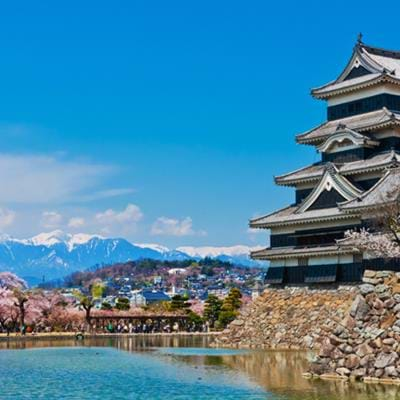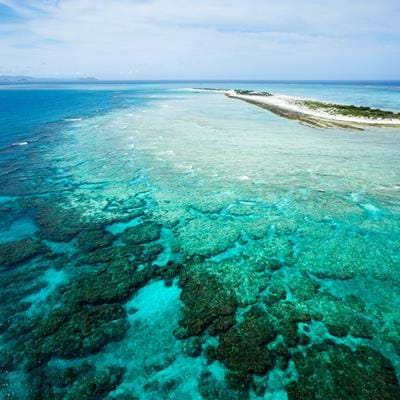Japan 18.04.2018 David Abram
The Kii Peninsula – ‘Kii-hantō’ in Japanese – is a mountainous region southeast of Osaka that’s little explored by foreigners, but which boasts a fabulously wild, rocky coastline of pine-studded bays, and some beautiful pilgrimage sites nestled in ancient cedar forest. Emperors, pilgrims and pleasure seekers have since the 6th-century AD travelled to this remote area to visit to Kii’s ancient Shinto shrines and Buddhist temples, now protected as UNESCO World Heritage Sites.
Today, these sacred sites remain places of great spiritual significance for Japanese people. Most travel to the region on daytrips, but a more rewarding and memorable way to the reach the shrines of Kii is on foot, via a network of wonderful old paved pathways known as the ‘Kumano Kodo’.
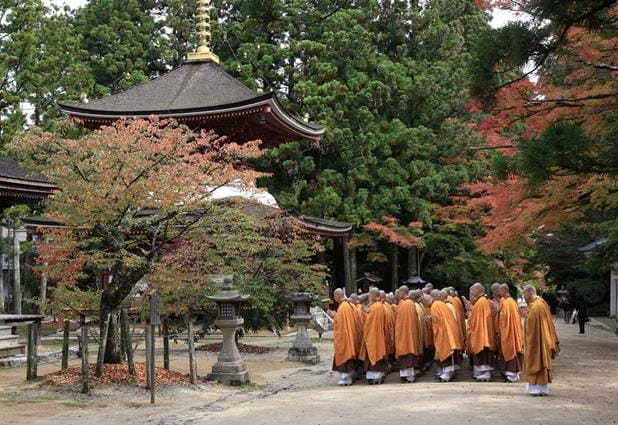
Crossing forests of cedar and cypress, tea terraces, waterfalls, rivers and groves of mikan orange trees, the lichen-covered pathways offers a unique means for foreigners to experience traditional Japanese culture. Sleeping in traditional pilgrims’ lodges – or ‘shukobos’ – you get to attend early morning rituals in local monasteries, watch Shinto priests officiating at rituals dressed in traditional white robes, and generally experience this authentic vestige of old Japanese life from the inside.
Here’s a rundown of the Kumano Kodo’s main highlights. For more details on how these places may be tied into a more wide-ranging tour including Kyoto, browse our ‘Sacred Trails’ tour here
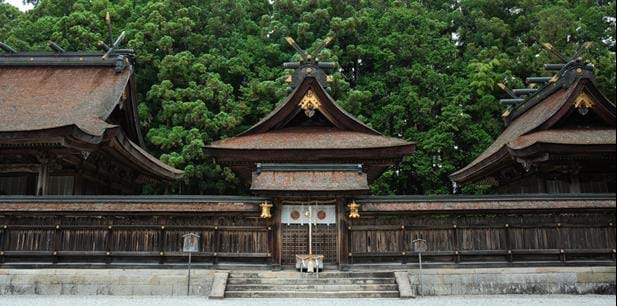
Hongu Taisha
On the wooded slopes of Mt Dainichi, the Hongu Taisha Shrine is the pivotal point of the entire Kumano Kodo trail network and one of Japan’s most revered temples. It’s also a fine specimen of medieval Japanese architecture, made entirely of unfinished cypress wood intricately constructed without the use of nails. With their traditional upswept eaves, handsome bronze ornaments and shingles made from bark, the roofs are the shrine’s pride and joy, lending a delightfully natural feel to the complex.
A kilometre away stands another of the region’s great sights: the mighty Oyunohara Torii – Japan’s largest ceremonial gateway. Its giant beams loom 34m (111ft) above the surrounding rice fields, marking the entrance to the sacred Kumano region.
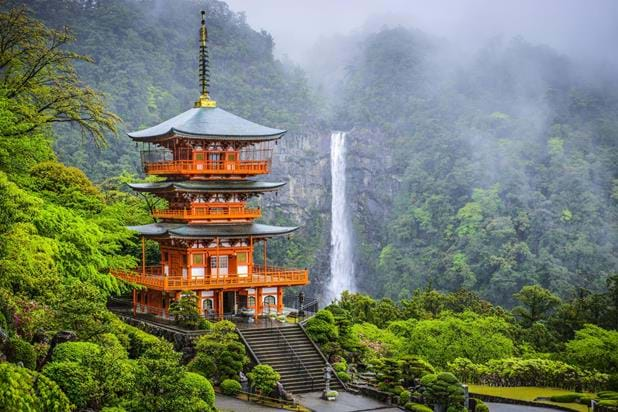
Nachi Taisha
One of the culminating points of the Kumano Kodo, the 3-storey, pagoda-roofed Seiganto-ji Temple is located close to the famous Nachi Falls. With its golden finial rising against a backdrop of forested mountains and white water plunging from the top of a 133-metre (436-feet) -high cliff, the shrine is an ethereal sight. Spend the night close by, and you can be here to witness the morning ritual performed by Shinto priests at the head of the falls, where the guardian kami spirit is believed to reside.
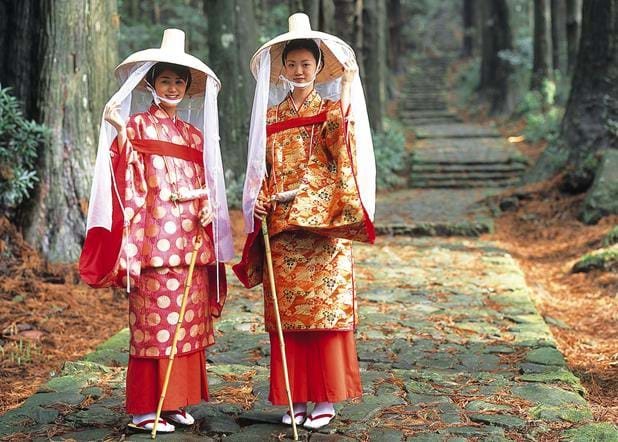
The Daimonzaka
To reach the Nachi Taisha shrine, most pilgrims ascend the mountain via the famous Daimon-zaka – an ancient cobblestone pathway lined with camphor tress and groves of bamboo. The most photographed section (pictured) is a flight of 267 steps, leading to a pair of ancient Japanese cedars known as the ‘Meitosugi’ – or ‘husband and wife cedar trees’ – whose roots are entangled beneath the path. Visitors can rent beautiful Heian-period kimonos – a great photo opportunity!
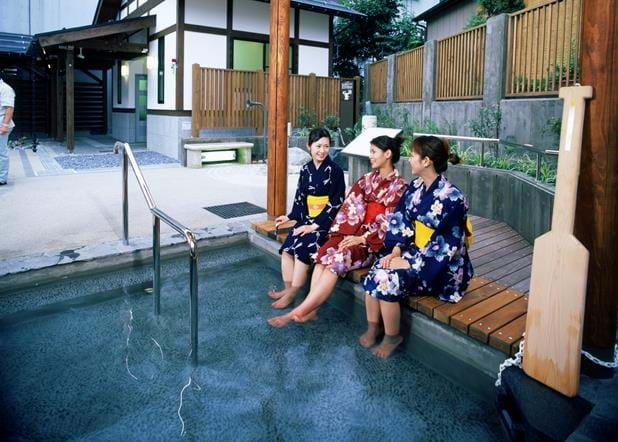
Onsen
‘Onsen’ – baths fed by geothermally heated spring water – offer the perfect way to ease those aches and pains after a day on the Kumano Kodo trails. Pilgrims also traditional take purificatory dips before beginning the day’s walk. One of the oldest and most famous places this happens is the Tsuboyu hot spring in the village of Yunomine, where trekkers bathe in readiness for the ascent of Mt Dainichi to the Hongu Taisha Shrine.
Boat rides on the Kumano-gawa River
No trip to the Kumano region is complete without a ride down the Kumano-gawa river valley in a traditional flat-bottomed boat. The sacred river winds through breath-taking scenery, of sheer cliffs and ancient forest. Passengers are required to wear conical hats made of rice straw, which contributes greatly to the old-world atmosphere of the experience.
The 90-minute rides end at the Hayatama Taisha Grand Shrine. Hayatama has a stately old bayberry tree in its grounds whose leaves pilgrims believe hold sacred powers. It is said that if you place one in your wallet you’ll never be short of cash, which explains why very few of them remain in reach! Located at the rivermouth on the coast, the area around Hayatama is renowned for its seafood, and at the nearby town of Shingu visitors can sample sublime prawn sashimi, accompanied by local sake.
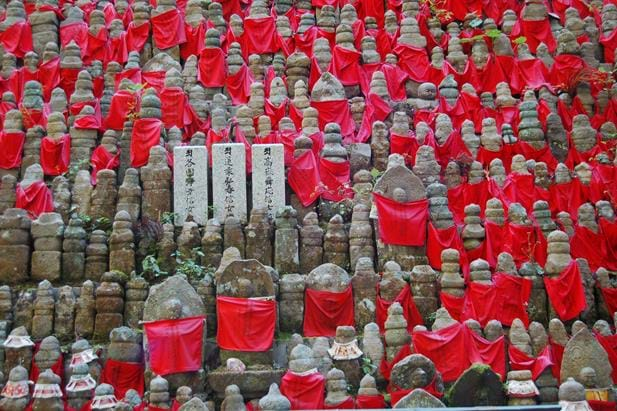
For more information on the Kumano Kodo trails and how to tie a visit to the region into a more wide-ranging itinerary, contact our team of specialist consultants at TransIndus.
